
- Home
- Integrations
-
Sitefinity Integration Offerings

Compatible Systems for Sitefinity

3dcart
Integrate 3dcart with your essential business systems like ERP, CRM, and accounting via robust iPaaS. Automate data flow for orders, inventory, and customer details, optimizing workflows, enhancing...

AAACooperTransportation
Integrate your systems with AAA Cooper Transportation via iPaaS to automate LTL freight logistics. Achieve real-time visibility, eliminate manual errors, and streamline shipping, tracking, and...

Aareon QL
Integrate Aareon QL with an iPaaS to automate housing management workflows. Achieve seamless data exchange across financial, CRM, and asset systems, eliminating manual entry and errors. Streamline...

ABFFreightSystem
Integrate ABFFreightSystem with your enterprise applications via iPaaS for automated shipping, tracking, and logistics workflows. Boost operational efficiency, data accuracy, and gain real-time...

Abillity
Integrate Abillity with core business systems like CRM & ERP to unify financial management and operational data. Leverage iPaaS for seamless bi-directional data synchronization, eliminating silos...

Act-On
Integrate Act-On with CRM, ERP, and sales tools via iPaaS to unify customer data, automate marketing workflows, and optimize lead nurturing. Achieve a comprehensive customer view, eliminate data...

ActiveCampaign
Unlock the full potential of ActiveCampaign with seamless iPaaS integration. Automate data synchronization across CRM, e-commerce, and support tools, eliminating manual entry. Optimize workflows,...

Acumatica
Integrate Acumatica ERP seamlessly with critical business apps like CRM & eCommerce. Leverage iPaaS to automate data flow, optimize workflows, and unify operations, creating a single source of...

ADuiePyle
Streamline logistics with A. Duie Pyle integration. Leverage iPaaS to automate order processing, gain real-time shipment tracking, and optimize freight quotes. Enhance supply chain efficiency,...

Agile CRM
Integrate Agile CRM with your business applications using iPaaS to automate workflows, ensure data consistency, and create a unified customer view. Streamline operations, boost efficiency, and...

Amazon Fulfillment
Automate Amazon FBA fulfillment with seamless iPaaS integration. Streamline order processing, sync inventory in real-time, and eliminate manual errors for peak operational efficiency. Optimize your...

Amazon Marketplace
Integrate Amazon Marketplace with your ERP, CRM, and inventory systems via iPaaS. Automate order processing, sync inventory in real-time, and streamline operations. Enhance data accuracy and...

Amazon RDS
Integrate Amazon RDS with your enterprise applications via iPaaS to automate data workflows and streamline operations. Unlock scalable, secure database management, enabling efficient data...

Amazon Redshift
Integrate Amazon Redshift with your enterprise systems using iPaaS to centralize data, automate ETL, and drive comprehensive analytics. Optimize workflows for real-time reporting, enhanced BI, and...

Amazon S3
Seamlessly integrate Amazon S3 with your enterprise systems via iPaaS for robust cloud storage. Automate data archival, backup, and analytics pipelines, ensuring secure, bi-directional data flow...

Amazon Seller Central
Seamlessly integrate Amazon Seller Central with your ERP, CRM, and inventory systems using an iPaaS. Automate order fulfillment, synchronize inventory, and centralize product data to optimize...

AspDotNetStoreFront
Streamline AspDotNetStoreFront operations with robust integration solutions. Connect your e-commerce platform to CRM, ERP, and accounting systems using advanced iPaaS capabilities. Automate data...

AuthorizeNet
Seamlessly integrate Authorize.Net with your business systems via iPaaS to automate secure online payment processing. Optimize financial workflows, reduce manual data entry, and unify transaction...

AverittExpress
Unlock efficient logistics with Averitt Express integration. Our iPaaS solution automates shipping processes, generates labels, provides real-time tracking, and optimizes freight quoting....

BigCommerce
Integrate BigCommerce with your essential business systems to unlock powerful automation. Our iPaaS solution streamlines e-commerce workflows, ensuring automated data sync for inventory, orders,...

BNG
BNG integration streamlines subscriber management, service provisioning, and billing by automating data exchange between Broadband Network Gateways and OSS/BSS. Leverage iPaaS for seamless...

Box
Elevate your enterprise content strategy with Box integration. Seamlessly connect Box to critical business applications via iPaaS to automate document workflows, centralize content access, and...

BridgePay
Integrate BridgePay with your core systems via iPaaS for secure, automated payment processing. Streamline credit, debit, and ACH transactions, optimize workflows, and reduce manual errors. Enhance...

Brightpearl
Brightpearl is a unified retail operating system that integrates inventory, orders, CRM, and accounting. Leverage powerful automation and iPaaS capabilities to streamline workflows, boost...

CentralFreightLines
Streamline your logistics with CentralFreightLines integration. Leverage iPaaS to automate shipping processes, from quotes to real-time tracking, directly within your existing business systems....

Channel Advisor
Integrate Channel Advisor with your e-commerce and ERP systems to automate product listings, inventory, and orders across multiple marketplaces. Streamline your online retail operations with...

Chase Orbital Paymentech
Streamline payment workflows by integrating Chase Orbital Paymentech. Leverage iPaaS to connect e-commerce, ERP, and CRM systems for automated, real-time transaction processing. Enhance security,...

Clarity eCommerce
Integrate Clarity eCommerce with your core business systems via iPaaS. Automate data flow between ERP, CRM, and more, optimizing workflows, reducing errors, and boosting operational efficiency for...

ClickATell
Integrate ClickATell to elevate your business communication. Automate critical SMS notifications, customer alerts, and marketing messages directly within your workflows. Leverage seamless...

ClickDimensions
Power your marketing automation with ClickDimensions. Leverage iPaaS integration to unify customer data across systems, automate sophisticated multi-channel campaigns, and optimize marketing...

Cybersource
Integrate Cybersource for secure, global payment processing and advanced fraud management. Automate your payment workflows, reduce risk, and optimize customer experiences with seamless integration...
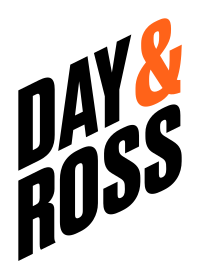
Day&RossFreight
Integrate Day & Ross Freight services to automate shipping processes, generate labels, and gain real-time tracking. Enhance supply chain visibility, optimize logistics workflows, and reduce manual...

DaylightTransport
Seamlessly connect your business systems with DaylightTransport integration to automate shipping workflows, eliminate manual data entry, and gain real-time logistics insights. Boost operational...

DaytonFreightLines
Seamlessly integrate Dayton Freight Lines into your ERP/TMS with our iPaaS solution. Automate freight quoting, shipment booking, and real-time tracking to optimize logistics workflows, reduce...

DHL
Connect your business systems directly with DHL via iPaaS for unparalleled shipping automation. Generate labels, track shipments, and optimize order fulfillment. Enhance efficiency, reduce manual...

DNN
Elevate your DNN CMS with powerful integrations. Connect DNN to critical business systems via iPaaS to automate data exchange, streamline workflows, and ensure data consistency. Eliminate manual...

dotCMS
Integrate dotCMS with enterprise systems like CRM/ERP for a unified digital experience. Leverage robust iPaaS capabilities to automate content workflows, synchronize data, and centralize...

Dotmailer
Integrate Dotmailer (Engagement Cloud) via iPaaS to centralize customer data, automate marketing workflows, and power personalized campaigns. Achieve a unified customer view and boost efficiency...

DPD
Integrate DPD seamlessly with your business systems via iPaaS. Automate shipping label generation, enable real-time parcel tracking, and synchronize order statuses to optimize your logistics...

Dropbox
Integrate Dropbox with your enterprise systems via iPaaS to automate document workflows and enhance data collaboration. Streamline file management, centralize critical business assets, and empower...

Drupal
Integrate Drupal with your enterprise systems like CRM, ERP, and marketing platforms to automate data exchange and streamline workflows. Leverage iPaaS for seamless Drupal integrations, enhancing...

Dynamics 365
Seamlessly integrate Dynamics 365 with all your enterprise systems using advanced iPaaS solutions. Automate critical workflows, enhance data accuracy, and gain a unified operational view across...

Dynamics AX
Connect Dynamics AX with an iPaaS to automate workflows, eliminate data silos, and achieve a unified operational view. Streamline data exchange across sales, finance, and supply chain for enhanced...

Dynamics CRM
Integrate Dynamics CRM to unify customer data, automate workflows, and optimize sales & service. Leverage iPaaS for seamless connectivity, enhancing efficiency and delivering superior customer...

Dynamics GP
Seamlessly integrate Dynamics GP to unlock powerful automation and streamline ERP workflows. Connect financial, operational, and customer data with iPaaS solutions for optimized efficiency and...

Dynamics NAV
Integrate Dynamics NAV with your critical business systems to eliminate data silos and automate workflows. Leverage iPaaS for seamless data flow, boosted operational efficiency, and real-time...

Ebay
Streamline your eBay operations with seamless integration. Connect eBay to your ERP, CRM, and accounting systems via iPaaS to automate order processing, sync inventory in real-time, and optimize...

eClinical Works
Integrate eClinicalWorks with our iPaaS solution to achieve seamless data flow, automate critical healthcare workflows, and optimize your entire digital ecosystem. Enhance data accuracy, reduce...

EKM
Seamlessly integrate your EKM e-commerce store with critical business systems using an iPaaS. Automate data flows for products, orders, and customers, eliminating manual entry and ensuring...

Elastic Email
Connect Elastic Email with your business apps via iPaaS to automate email workflows, centralize contact management, and gain enhanced data insights. Streamline operations, boost efficiency, and...

Epic
Seamlessly connect Epic EHR with your healthcare ecosystem using powerful iPaaS solutions. Automate critical data exchange, unify patient views, and optimize clinical workflows for enhanced care...

Epicor
Seamlessly integrate Epicor ERP with all your business applications using iPaaS for powerful workflow automation and data synchronization. Eliminate manual data entry, reduce errors, and optimize...

Epicor E10
Unlock Epicor E10's full potential with seamless integration. Leverage iPaaS to automate workflows, centralize data, and optimize business processes across manufacturing, supply chain, and finance....

Epicor E9
Epicor E9 ERP unifies manufacturing & distribution operations, boosting efficiency and data visibility. Integrate E9 with your tech stack via iPaaS for seamless automation, optimized workflows, and...

Epicor Eclipse
Epicor Eclipse is the leading ERP for wholesale distributors. It delivers powerful workflow automation for inventory, orders, and financials, ensuring seamless enterprise integration. Optimize...

Epicor Kinetic
Integrate Epicor Kinetic ERP to create a unified business ecosystem. Leverage iPaaS for robust automation, optimizing workflows across manufacturing, supply chain, and finance. Achieve superior...

Epicor P21
Seamlessly integrate Epicor P21 with your critical business systems using an iPaaS solution. Automate workflows, eliminate data silos, and unify operations across sales, inventory, and customer...

EstesExpressLines
Integrate Estes Express Lines with your business systems via iPaaS for automated LTL shipping, real-time rates, and enhanced logistics. Optimize workflows, boost data accuracy, and gain supply...

Etsy
Streamline your Etsy shop operations with powerful iPaaS integration. Automate order synchronization, real-time inventory updates, and product listing management across ERP, CRM, and accounting...

Eventbrite
Streamline your event management by integrating Eventbrite with your essential business systems. Leverage iPaaS to automate attendee data syncs, trigger marketing campaigns, and optimize workflows....

ExpressionEngine
Integrate ExpressionEngine CMS seamlessly with critical business systems using iPaaS. Automate content workflows, centralize data from CRM/ERP/e-commerce, and optimize operations. Drive efficiency,...

Seamlessly integrate Facebook with your enterprise systems via iPaaS. Automate data synchronization for customer profiles, ad performance, and messages, optimizing workflows. Centralize insights,...

FedEx
Integrate FedEx with your enterprise systems via iPaaS to automate shipping, optimize logistics workflows, and enhance customer experience. Streamline label generation, real-time tracking, and...

FedExFreight
Integrate FedEx Freight with your enterprise systems for automated LTL shipping. Streamline logistics, generate real-time rate quotes, and book pickups directly, boosting efficiency and data...

First Data
Integrate First Data (Fiserv) with your enterprise systems via iPaaS for secure, automated payment processing. Streamline e-commerce, POS, and ERP workflows, enhancing financial efficiency and...

Freshbooks
Seamlessly integrate Freshbooks with your enterprise applications to automate accounting, enhance data accuracy, and streamline workflows. Leverage iPaaS for robust data exchange, optimizing...

FTP
Seamlessly integrate FTP with your enterprise ecosystem using our iPaaS. Automate secure, reliable file transfers between applications, streamline critical data exchange, and optimize workflows....

G Suite
Integrate G Suite (Google Workspace) with your core business applications to unlock seamless automation and boost productivity. Leverage iPaaS to connect Gmail, Drive, Calendar, and Docs with CRM,...

GoCardless
GoCardless integration via iPaaS automates recurring direct debit payments, streamlining financial workflows. Connect and synchronize payment data across all business systems to optimize cash flow,...

Google Drive
Integrate Google Drive with other business applications via iPaaS to automate file management, synchronize data, and optimize critical workflows. Enhance productivity and collaboration across your...

GoogleAnalytics
Unify Google Analytics data with CRM, sales, and marketing platforms through seamless iPaaS integration. Gain deeper customer insights, personalize experiences, and automate workflows to optimize...

GoogleTagManager
Integrate Google Tag Manager with your iPaaS to automate tag deployment and unify data collection across all marketing and analytics platforms. Streamline your digital workflows, ensure data...

Groupon
Elevate your Groupon operations with robust integration. Seamlessly connect Groupon to your POS, CRM, and inventory systems via iPaaS to automate data, optimize workflows, and enhance customer...

Heartland
Heartland integration connects payment processing with your business applications via iPaaS, automating transactions and ensuring seamless data flow. Boost operational efficiency, enhance data...

Hermes
Hermes integration seamlessly connects your ERP with critical business systems, leveraging iPaaS principles for automated data exchange and workflow synchronization. Achieve enhanced data...

HollandRegional
Integrate your enterprise systems with HollandRegional using iPaaS for seamless data exchange and automated workflows. Enhance data accuracy, boost operational efficiency, and make better decisions...

HubSpot
Integrate HubSpot to unify CRM, marketing, sales, and service data across your enterprise. Leverage iPaaS to automate workflows, eliminate data silos, and enhance data accuracy. Streamline...

Infor
Seamlessly integrate Infor ERP with all your business systems using powerful iPaaS. Automate workflows, ensure data consistency across finance, HR, and supply chain, and boost operational...

Infor CloudSuite
Seamlessly integrate Infor CloudSuite with iPaaS to automate critical ERP workflows. Enhance data accuracy, boost operational efficiency, and optimize end-to-end processes using low-code tools and...

Integrate Instagram with your enterprise applications to automate data exchange, streamline workflows, and enhance marketing efforts. Leverage iPaaS for seamless synchronization of user data, post...

Jira
Integrate Jira with your enterprise applications via iPaaS to automate workflows, synchronize data, and optimize project management. Enhance collaboration, eliminate manual tasks, and ensure...

Joomla
Unlock Joomla's full potential by integrating it with your vital business systems. Leverage iPaaS to automate workflows, synchronize data, and streamline operations, enhancing efficiency and...

Kashflow
Integrate Kashflow ERP effortlessly using our iPaaS platform. Automate critical financial workflows, from invoicing to payroll, optimizing accounting processes and boosting data accuracy. Empower...

Kentico
Integrate Kentico CMS with your core business systems like CRM, ERP, and e-commerce to unify data, automate workflows, and enhance customer experiences. Leverage iPaaS for seamless integration,...

LabVantage LIMS
LabVantage LIMS is a web-based, enterprise LIMS that serves diverse sectors, including pharmaceutical R&D, manufacturing, and clinical diagnostics. It provides capabilities for sample tracking,...
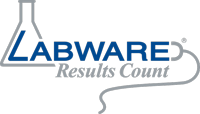
LabWare LIMS
LabWare LIMS is a highly configurable and scalable LIMS widely adopted in pharmaceutical, biotech, and clinical diagnostic labs. It provides extensive capabilities for sample management, testing,...

Integrate LinkedIn with your business systems via iPaaS to automate data synchronization, streamline recruitment workflows, and enrich CRM data. Leverage professional insights for optimized...

Linnworks
Integrate Linnworks with essential platforms via iPaaS for automated data synchronization across e-commerce, ERP, and CRM. Streamline multi-channel operations, reduce manual errors, and optimize...

Lotus Notes
Seamlessly integrate your critical HCL Notes applications with modern ERP, CRM, and business systems. Break down data silos, automate workflows via iPaaS, and drive efficiency for optimized...

Magento
Integrate Magento with an iPaaS to automate eCommerce operations, streamline workflows, and ensure seamless data exchange across your enterprise. Eliminate manual errors, boost efficiency, and...

MailChimp
Leverage iPaaS to integrate MailChimp, automating email marketing and syncing customer data across CRM & e-commerce. Optimize workflows, enhance personalization, and drive campaign efficiency for...

Mailjet
Seamlessly integrate Mailjet with your core business systems via iPaaS. Automate contact synchronization and campaign management across CRM, e-commerce, and more. Optimize email workflows for...

Marketo
Marketo integration unifies marketing automation with your enterprise systems via iPaaS. Streamline workflows, automate data sync across CRM, ERP, and analytics, and gain a unified customer view to...

Metapack
Integrate Metapack with your enterprise systems via iPaaS to automate shipping, streamline fulfillment, and optimize logistics workflows. Gain multi-carrier management, real-time tracking, and...

Microsoft Exchange
Seamlessly integrate Microsoft Exchange with your entire tech stack using iPaaS. Automate email, calendar, and contact synchronization to optimize workflows, ensure data consistency, and empower...

Microsoft SQL Server
Unlock the power of your data with Microsoft SQL Server integration via our iPaaS. Seamlessly connect, automate workflows, and enable bi-directional data flow across enterprise systems. Drive...

MySQL
Integrate MySQL seamlessly with your enterprise applications using our iPaaS. Automate data exchange, synchronize workflows, and eliminate silos to power your business with accurate, real-time data...

NetSuite
Streamline operations by integrating NetSuite across your enterprise. Unify ERP, CRM, and e-commerce data with other systems for seamless exchange, automated workflows, and superior efficiency....

NopCommerce
Integrate NopCommerce with ERP, CRM, and marketing platforms to automate data synchronization and optimize e-commerce workflows. Leverage iPaaS for seamless integration, centralizing operations,...

OakHarborFreightLines
Automate Oak Harbor Freight Lines logistics with our iPaaS integration. Streamline shipment orders, real-time tracking, and invoicing for enhanced operational efficiency, data accuracy, and...

Odata
OData standardizes data access across diverse enterprise systems, simplifying RESTful API development. It acts as a universal bridge, enabling seamless data integration and efficient automation...

Odoo ERP
Integrate Odoo ERP to unify your entire business, from CRM to manufacturing. Leverage iPaaS for seamless, automated data flows across all systems, optimizing workflows, eliminating silos, and...

OneDrive
Integrate OneDrive with your business applications via iPaaS to streamline document management, enhance collaboration, and automate critical workflows. Centralize file access, boost team...

Ontraport
Integrate Ontraport seamlessly with your business stack via our iPaaS. Automate marketing, sales, and CRM workflows, synchronize customer data, and optimize operations. Drive efficiency and growth...

Oracle
Clarity AI offers AI-first, turn-key iPaaS solutions for seamless Oracle integration across your enterprise. Eliminate data silos, automate complex workflows, and unlock real-time insights with...

Oracle EBS
Seamlessly integrate Oracle EBS with your entire enterprise ecosystem via iPaaS. Automate critical business workflows, ensure real-time data consistency across finance, HR, and supply chain, and...

Oracle Fusion
Unlock the full potential of Oracle Fusion applications. Seamlessly integrate your ERP, SCM, HCM, and CRM with other systems via iPaaS for automated data flow, optimized workflows, and a unified...

Oracle JD Edwards
Seamlessly integrate Oracle JD Edwards with an iPaaS to automate critical workflows and ensure data consistency across manufacturing, finance, and supply chain. Boost operational efficiency and...

Parcelforce
Integrate Parcelforce with your business systems via iPaaS to automate shipping processes. Generate labels, calculate real-time rates, book collections, and assign tracking numbers effortlessly....

Pardot
Unlock Pardot's full potential by integrating it with your CRM, ERP, and e-commerce platforms. Achieve seamless data exchange, unified customer views, and automated workflows. Enhance marketing...

Payeezy
Clarity's AI-first Payeezy integration simplifies payment processing with rapid, bi-directional data sync. Leverage AI automation for error-free transactions, real-time insights, and optimized...

Payoneer
Streamline international payments with Payoneer integration. Automate cross-border transactions, reconcile finances, and manage global payouts efficiently. Leverage iPaaS for seamless workflow...

PayPal
Integrate PayPal with your business systems to automate payment processing, streamline financial operations, and achieve real-time data synchronization. Leverage iPaaS for seamless workflow...

PayTrace
Integrate PayTrace with your business applications via iPaaS to automate secure credit card and ACH payment processing. Streamline financial workflows, enhance data accuracy across CRM/ERP, and...

Seamlessly integrate Pinterest with your business applications to automate content sharing, synchronize data, and streamline marketing workflows. Leverage iPaaS capabilities for enhanced...

PioneerRx
PioneerRx is a leading pharmacy management software for independent pharmacies in the US, known for its extensive features in prescription processing, inventory management, and patient engagement....

Pipedrive
Unlock Pipedrive's full potential with our iPaaS integration. Automate sales workflows, achieve two-way data sync, and unify CRM insights across your enterprise. Drive smarter deals, optimize...

PittOhioTransportationGroup
Integrate your ERP/TMS with Pitt Ohio Transportation Group via iPaaS to automate shipment creation, gain real-time tracking, and optimize logistics workflows. Enhance supply chain efficiency,...

Podio
Elevate work management with Podio integration. Connect Podio via iPaaS to automate tasks, eliminate manual data entry, and centralize information. Streamline workflows, enhance collaboration, and...

PostgreSQL
Seamlessly integrate PostgreSQL with your enterprise systems using our iPaaS platform. Unlock robust data workflows, automate critical processes, and ensure real-time data consistency across...

Prestashop
Integrate Prestashop with vital business systems using iPaaS to automate e-commerce workflows. Achieve seamless data synchronization for orders, inventory, and customers, streamlining operations...

Qualtrics
Integrate Qualtrics with your enterprise systems via iPaaS to automate experience data collection and action. Optimize workflows, gain deeper insights from customer and employee feedback, and drive...

QuickBooks
Integrate QuickBooks Enterprise with your vital business systems for seamless data flow, eliminating manual entry and boosting accuracy. Leverage iPaaS to automate financial workflows, optimize...

Quotewerks
Integrate Quotewerks with your core business systems to automate sales quotes and proposals. Leverage iPaaS for streamlined workflows, enhanced data accuracy, and improved efficiency, accelerating...

Reddaway
Integrate Reddaway LTL shipping with your systems to automate freight operations. Leverage iPaaS for real-time rate quoting, shipment creation, and tracking, optimizing workflows and eliminating...

RLCarriers
Integrate RLCarriers with your ERP/WMS to automate shipping and logistics. Get real-time freight quotes, automate label & BOL creation, and track shipments seamlessly. Optimize workflows, reduce...

RoadrunnerFreight
Integrate RoadrunnerFreight with your systems to automate freight shipping and logistics. Streamline workflows, gain real-time tracking, and optimize operations by eliminating manual data entry....

Sage 100
Integrate Sage 100 with your critical business applications using iPaaS to automate data exchange, streamline workflows, and eliminate manual entry. Achieve real-time data accuracy, boost...

Sage 200
Unlock Sage 200's potential with powerful iPaaS integration. Automate critical workflows, unify data across your enterprise, and optimize operations for peak efficiency. Streamline processes,...

Sage 300
Elevate Sage 300 with powerful iPaaS integration. Automate core financial and operational workflows, ensuring real-time data sync across your enterprise. Optimize processes, reduce manual effort,...

Sage 50
Unlock Sage 50's full potential. Seamlessly integrate your core accounting with other business applications via iPaaS for unparalleled automation, optimized workflows, and unified data. Drive...

Sage Intacct
Integrate Sage Intacct with your enterprise systems via iPaaS to automate financial workflows, eliminate manual data entry, and unify operations. Streamline financial management, enhance data...

Sage Pay
Integrate Sage Pay with your core business systems via iPaaS. Automate payment workflows, enhance financial accuracy, and streamline operations from sales to accounting. Reduce manual data entry...

Sage X3
Unlock Sage X3's full potential with robust iPaaS integration. Automate data flow, optimize workflows, and achieve real-time synchronization across finance, supply chain, and CRM. Enhance...

SaiaMotorFreightLine
Integrate Saia Motor Freight Line via iPaaS to automate LTL shipping workflows. Streamline booking, generate labels, and gain real-time tracking directly from your ERP/WMS. Optimize logistics,...

Salesforce
Integrate Salesforce seamlessly to unify customer data, automate critical workflows, and eliminate data silos. Leverage iPaaS for enhanced operational efficiency, smarter decisions, and a complete...

Salesforce Marketing Cloud
Integrate Salesforce Marketing Cloud to unify customer data, automate marketing workflows, and personalize campaigns across channels. Leverage robust iPaaS capabilities for seamless connectivity,...

SAP
Seamlessly integrate SAP with your entire enterprise ecosystem using our iPaaS. Automate critical ERP workflows, synchronize data across all applications, and optimize complex business processes...

SAP Business ByDesign
Unlock the full potential of SAP Business ByDesign through robust integration. Our iPaaS solutions enable seamless connectivity with CRM, SCM, and custom applications, driving real-time data...
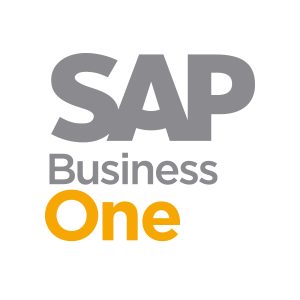
SAP Business One
Integrate SAP Business One with your entire tech stack to automate data exchange, streamline operations, and achieve a unified business view. Leverage iPaaS for seamless bi-directional data...

SAP Concur
Connect SAP Concur with your existing business systems via iPaaS for seamless expense, travel, and invoice automation. Streamline workflows, enhance data accuracy, and gain real-time spending...

SAP ECC
Unlock the full potential of SAP ECC by seamlessly integrating it with modern applications. Leverage iPaaS for robust automation, optimize workflows across finance, sales, and HR, and eliminate...

SAP Hybris
Seamlessly integrate SAP Hybris with your enterprise ecosystem using iPaaS. Achieve unified customer data, automated order processing, and optimized inventory management. Streamline workflows for...

SAP S/4HANA
Integrate SAP S/4HANA with iPaaS to automate data exchange, streamline workflows, and gain real-time insights across your enterprise. Optimize critical business processes, enhance efficiency, and...

Sendgrid
Sendgrid integration streamlines email management, from marketing campaigns to critical transactional messages. Leverage iPaaS to automate welcome emails, order confirmations, and newsletters,...

SFTP
Securely automate file transfers across your enterprise with SFTP integration. Essential for iPaaS, it enables encrypted data exchange between systems and partners, optimizing workflows, ensuring...

SharpSpring
Integrate SharpSpring with your business systems for seamless data exchange and optimized workflows. Leverage iPaaS to automate lead synchronization, contact updates, and campaign interactions,...

ShipStation
Seamlessly integrate ShipStation with your critical business systems like e-commerce, ERP, and WMS using iPaaS. Automate order import, achieve real-time inventory synchronization, and unify data...

Shopify
Integrate Shopify seamlessly with your enterprise systems using our iPaaS. Automate e-commerce workflows, sync critical data like orders and customers, and optimize operations for efficiency and...

Shopware
Seamlessly integrate Shopware with your enterprise systems using our iPaaS. Automate e-commerce workflows, synchronize data, and optimize operations from order fulfillment to customer management....

Sitecore
Sitecore is an enterprise CMS for delivering personalized digital experiences. Integrate Sitecore with your ecosystem via iPaaS to automate marketing workflows, optimize customer journeys, and...

Slack
Transform Slack into an intelligent operational hub with powerful integrations. Connect Slack with your essential business applications to automate workflows, centralize communication, and optimize...

SMTP2GO
Elevate your email strategy with SMTP2GO integration. Leverage its robust infrastructure for enhanced deliverability of all transactional and automated emails. Streamline communication workflows,...

SoutheasternFreightLines
Integrate your ERP, TMS, or WMS with SoutheasternFreightLines via iPaaS to automate freight logistics. Streamline shipping requests, gain real-time tracking, optimize costs, and enhance workflow...

STARLIMS
STARLIMS is an enterprise LIMS suite designed for diverse industries, including pharmaceutical, clinical, and public health laboratories. It offers modules for quality control, stability studies,...

Streak
Integrate Streak's Gmail-native CRM to unify customer data and automate critical workflows across your enterprise. Leverage iPaaS for seamless synchronization with marketing, accounting, and...

Stripe
Integrate Stripe to automate payment processing and unify financial data across CRM, ERP, and e-commerce platforms. Leverage iPaaS for seamless workflows, reduced manual errors, and enhanced...

SugarCRM
Integrate SugarCRM with your essential business applications via iPaaS to automate workflows, synchronize data, and achieve a unified customer 360-degree view. Enhance operational efficiency,...

SurveyMonkey
Integrate SurveyMonkey with your business applications to automate survey data workflows. Leverage iPaaS for seamless data transfer, eliminate manual entry, and gain instant insights to optimize...
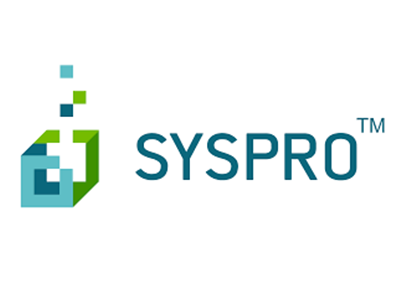
Syspro
Integrate Syspro seamlessly with your enterprise ecosystem using our iPaaS. Automate critical workflows, optimize data synchronization, and enhance operational efficiency across manufacturing and...

Thermo Fisher SampleManager LIMS
SampleManager LIMS is a robust, enterprise-grade LIMS solution used across various industries, including biopharmaceuticals and clinical testing. It offers comprehensive features for managing...

TIMS
Integrate your TIMS (Treasury Information Management System) with an iPaaS to achieve seamless financial data flow, eliminate silos, and gain a unified view of treasury operations. Automate...

TNT
Integrate TNT shipping with your business systems through our iPaaS solution. Automate label generation, real-time tracking, service cost calculation, and shipment booking to optimize logistics...

Seamlessly integrate Twitter with your enterprise applications via iPaaS. Automate tweet capture, user data, and engagement metrics to enrich CRM, refine marketing, and power sentiment analysis....
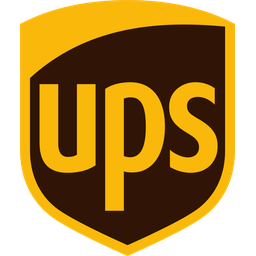
UPS
Streamline UPS shipping by integrating your e-commerce, ERP, or WMS via iPaaS. Automate label generation, access real-time rates, and optimize workflows. Eliminate manual processes, boost...

UPSFreight
Integrate UPS Freight via iPaaS to automate shipping, quoting, and real-time tracking. Streamline complex logistics workflows, reduce manual errors, and enhance operational efficiency with seamless...

USPS
Streamline your shipping operations with robust USPS integration. Automate label creation, rate calculation, and real-time tracking directly within your e-commerce, ERP, or WMS platforms. Leverage...

Vantiv
Seamlessly integrate Vantiv payment processing with your enterprise systems using iPaaS. Automate transactions, centralize financial data, and optimize workflows for enhanced operational efficiency...

Volusion
Integrate Volusion with your critical business systems like ERP, CRM, and accounting to automate order processing, synchronize inventory, and centralize customer data. Leverage iPaaS for seamless,...

Walmart Marketplace
Seamlessly integrate Walmart Marketplace using iPaaS for automated order processing, real-time inventory sync, and optimized product listings. Leverage automation and AI to streamline workflows,...

Wayfair
Streamline your Wayfair operations with robust integration. Automate order, inventory, and product data sync between your internal systems and the Wayfair marketplace. Leverage iPaaS for seamless,...

WernerEnterprises
Streamline shipping operations by integrating your systems with WernerEnterprises. Leverage iPaaS for robust bi-directional data exchange, automating critical workflows like inventory and customer...

WooCommerce
Streamline your e-commerce operations with WooCommerce integration. Connect your store to ERP, CRM, and accounting systems via robust iPaaS solutions, automating order processing, inventory, and...

WordPress
Unlock seamless WordPress integration with our iPaaS solutions. Achieve bidirectional data synchronization to automate workflows, eliminate manual errors, and maintain real-time data consistency...

X-Cart
Integrate X-Cart with your essential business systems like ERP, CRM, and accounting to automate data exchange and optimize workflows. Leverage iPaaS capabilities to eliminate manual data entry,...

Xamarin
Integrate Xamarin to automate and streamline cross-platform mobile app development within your enterprise. Leverage a single C# codebase to build high-performance native Android, iOS, and UWP...

Xero
Seamlessly integrate Xero to unify critical financial data with your CRM. Automate invoicing, payment tracking, and customer history for optimized workflows. Leverage iPaaS for enhanced customer...

XPOLogistics
Seamlessly integrate your business systems with XPOLogistics to automate shipping workflows, gain real-time visibility, and boost operational efficiency. Leverage iPaaS for accurate data exchange,...

YouTube
Automate YouTube video management and content distribution with seamless iPaaS integration. Streamline uploads, synchronize analytics, and trigger workflows for enhanced marketing, audience...

YRCFreight
Seamlessly integrate YRCFreight with your enterprise systems via iPaaS. Automate critical shipping data exchange to boost efficiency, enhance accuracy, and gain comprehensive logistics visibility....

Zendesk
Seamlessly integrate Zendesk with your enterprise systems. Leverage iPaaS for powerful automation, unifying customer data and optimizing support workflows. Enhance CX, boost efficiency, and drive...

Znode
Seamlessly integrate Znode with enterprise systems using iPaaS to automate B2B/B2C e-commerce workflows. Accelerate order processing, ensure data consistency, and optimize operations, reducing...

Zoho
Seamlessly integrate Zoho CRM, Books, and other core applications with your enterprise systems via iPaaS. Automate workflows, ensure bi-directional data accuracy, and optimize operations. Leverage...

Zoho Inventory
Integrate Zoho Inventory with your business systems to centralize data, automate workflows, and optimize operations. Leverage iPaaS capabilities for seamless data flow across CRM, accounting, and...

Zoho People
Integrate Zoho People for a unified HR ecosystem. Streamline employee data, attendance, and performance reviews with powerful automation and iPaaS capabilities. Enhance data accuracy, boost...






